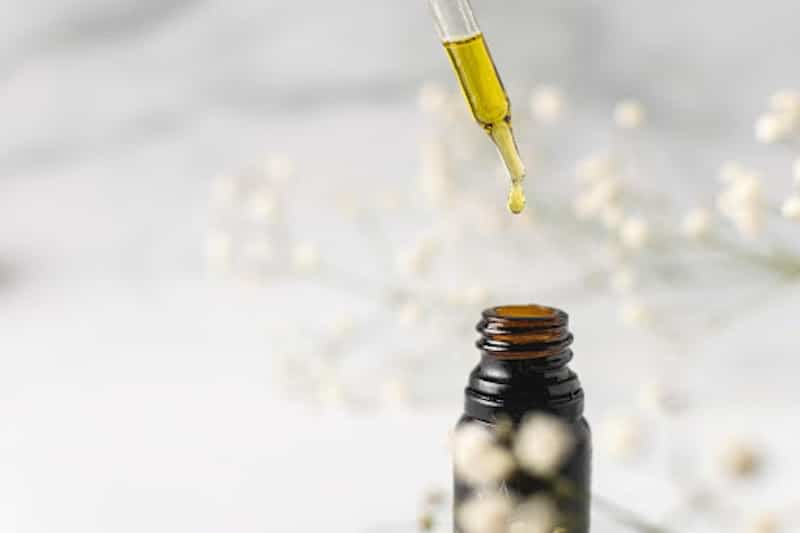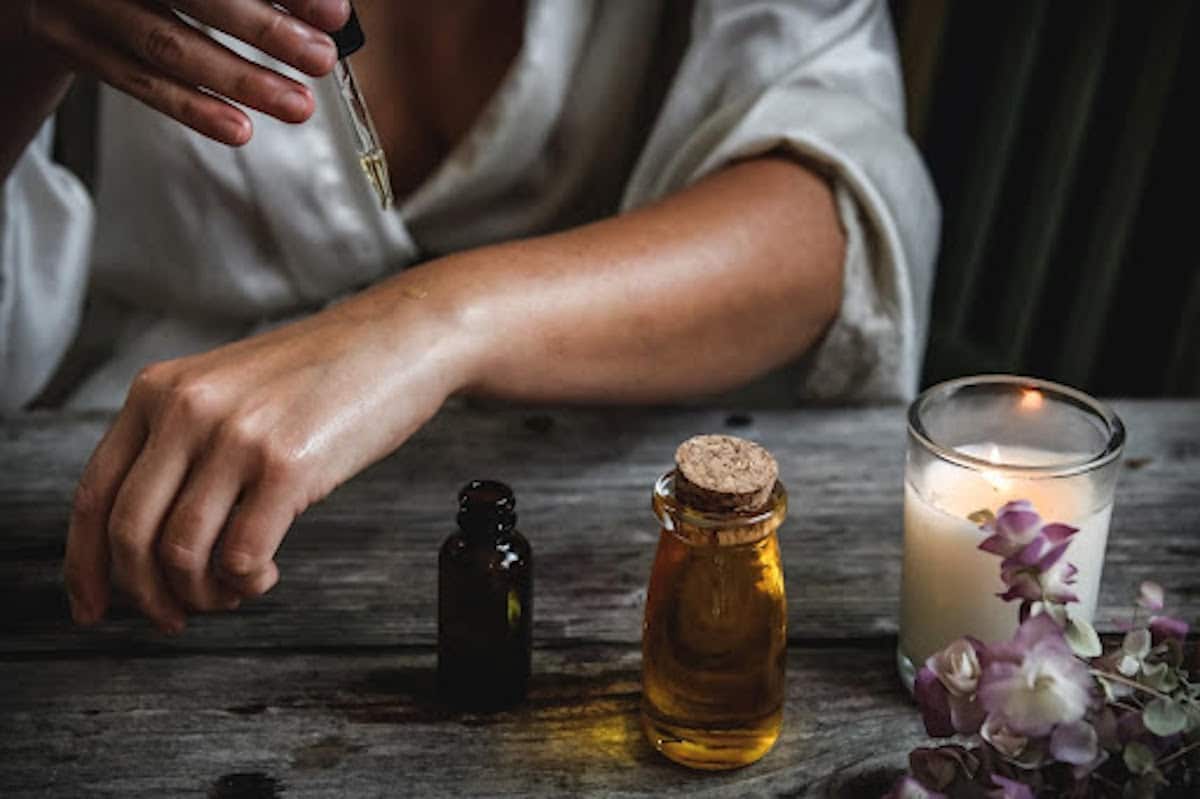Table of Contents
As more of us turn to CBD oil for health and wellness, many might be introduced to the term essential oil for the first time. While not the same as CBD oil, there are some key differences and similarities we’ll point out in this post.
Whether you’re a long-time user of essential oils or a first-time user of CBD, we’ll cover everything you need to know about these two types of oils. What is CBD essential oil? Can you mix CBD oil with essential oils? We’ll answer all of your questions and more.
What Is CBD Oil?
CBD, short for cannabidiol, is one of over 100 compounds found in the cannabis plant. The most potent compounds in cannabis are CBD and THC, the chemical responsible for making you high. In the last few decades, researchers were able to identify what made CBD work to provide therapeutic relief.
Known as the Endocannabinoid System (ECS), this complex bio-function is present in every animal, including humans This system allows for cannabinoids to stick to your cb1 and cb2 receptors. When cannabinoids, like CBD, enter our body, the ECS is triggered to provide a positive immune response.
Benefits of CBD Oil
CBD’s anti-inflammatory properties are responsible for much of its health benefits, including:
- Sleep Aid
- Skin Relief
- Diabetes
- Heart Disease
- Arthritis
- Fibromyalgia
Different Types Of CBD Oil
CBD oil typically comes in two types, Full-Spectrum and THC-Free.
1. Full-Spectrum CBD Oil
Full-Spectrum CBD contains the entire profile of the cannabis plant. That means, when taking a full-spectrum variety, you’re ingesting over 100 compounds present in cannabis. Think of it as eating steel-cut oatmeal vs. rolled oats.
Full-spectrum contains all the “essential ingredients” present in the cannabis plant. When taken together, these compounds create a synergistic effect known as the ‘entourage effect.’
2. THC-Free CBD Oil
Just as the name implies, THC-free CBD contains no THC, the chemical responsible for making you high. While CBD, by law, contains no more than 0.3% THC (trace amounts of THC far below to have a psychoactive effect), some might feel more comfortable with this option. For example, if you’re taking a drug test, THC-Free CBD can be an excellent product to take, but you might not receive the same therapeutic relief as you would with a full spectrum.
Image from Unsplash by user Chelsea Shapouri
What Is Essential Oil?
Essential oils are used primarily in aromatherapy, a type of healing method that uses plant compounds to promote health. These compounds are called essential oils. When using essential oil for aromatherapy, you’ll often notice strong scents, which are the plant’s essence.
Aromatherapy oils usually contain very minimal essential oil – around 3% plant extract to 97% carrier oil, such as coconut oil. Essential oils work by penetrating the skin and smelling the oil itself through aromatherapy. They are used in a variety of products including the following:
- Body Lotions
- Bath Salts
- Hot Compress
- Facial Steam or Inhalers
- Humidifiers or Diffusers
Different Types of Essential Oil and Their Benefits
When inhaling, essential oils work with your limbic system to provide relief. Your limbic system regulates mood and emotions, which is why many people report feeling more calm and relaxed after aromatherapy. While there are more than 80 types of essential oils, the most popular ones include the following:
- Frankincense: Helps with inflammation, mood, and sleep
- Chamomile: Provides relaxation
- Lavender: Help ease stress
- Sandalwood: Improves focus and calms nerves
- Bergamot: Helps skin conditions like eczema
- Peppermint: Energy booster. Great for digestion
- Rose: Helps reduce anxiety
- Lemon: Digestion and headache relief
- Tea Tree: Treats infections
- Jasmine: Helps improve libido
- Eucalyptus: Powerful anti-microbial

Biggest Differences: CBD vs. Essential Oil
The biggest difference is how both interact with your body and how they are ingested. CBD works with your ECS system, focusing on the cannabinoids present in your body. When taken, usually as a tincture, receptors in your body send signals to your brain via the ECS system to lower inflammation.
Essential oils work via the limbic system and don’t target inflammation biomarkers. CBD oil must be consumed or ingested through the mouth, while essential oils are absorbed through the skin.
Aromatherapy is also less studied than CBD, meaning there’s not as much hard data on its effectiveness vs. CBD’s reputation.
Image from Unsplash by user Crystalweed
Similarities: CBD Oil Essential Oil
Both CBD and essential oils improve mood, reduce stress, and provide a calming sensation after use. They’re also plant-based compounds, meaning mother nature provides the healing effect. Because of environmental toxins, more people are looking for “natural” relief from their symptoms. This means nothing synthetic or artificial, which both CBD and essential oils provide.
Another similarity is that CBD and essential oils usually require a carrier oil – which your primary ingredient is mixed with an oil base to dilute the solution. CBD and essential oils are very potent in their purest forms, so you’ll always want to mix the oils with a base ingredient to maximize results.
Can You Use CBD and Essential Oils Together?
According to the World Health Organization, CBD is safe to use. As mentioned, CBD has also been studied more extensively than essential oils. In China, herbalists have used combination oil therapy for thousands of years.
Because of CBD’s safe and effective profile, we can assume the two are safe to use together. As always, check with your doctor before starting a CBD regimen and let them know if you plan on mixing CBD with essential oils.
Wrapping Up
As you can see, CBD oil and essential oils have a myriad of useful applications. They can be combined to create a CBD essential oil which will provide the best of both worlds. Both types of oil are considered safe to use, with minimal and rare side effects.


